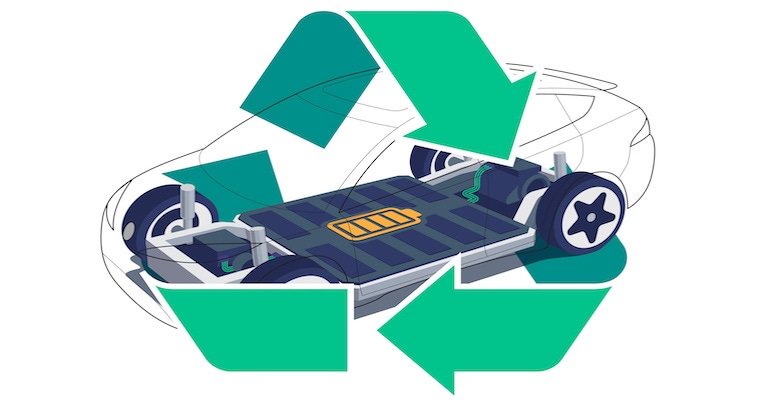US-based 6K, Inc. has developed a microwave plasma that can aid in direct recycling of lithium-ion battery cathodes.
August 17, 2021

As the number of electric vehicles (EVs) continues to grow, attention is being focused upon recycling the lithium-ion battery packs that power them. EV batteries contain valuable materials like nickel, cobalt, and lithium that can be extracted and reused, reducing the need for virgin raw materials when making new batteries, and preventing spent batteries from ending up in landfills.
Recycling lithium-ion batteries usually require physical shredding of the battery cells and chemical processes like hydrometallurgy or pyrometallurgy to extract and recover valuable electrode materials. An alternate method, called direct recycling, recovers functional cathode particles without decomposing them. The cathode material can then be healed and reused in a new lithium-ion battery.
Direct
“We are pursuing two parallel paths,” said Richard Holman, vice-president of battery products at 6K inc. The Massachusetts-based company has developed a system called UniMelt that uses a high-temperature microwave plasma that can use a variety of feedstock to create spherical particles made from new or recycled cathode materials. “We are working with a partner who has a nice method to collect the cathode, separated out to a form that is useful to us,” Holman told Battery Technology.
Holman told us that there are three stages to creating directly recycled cathodes from the feedstock. “One is just healing the mechanical damage that happens with something like NMC when you recycle it. You get cracking between the grains, things like that,” Holman said. “We have demonstrated that we can heal that,” he added.
Next, there is restoring lithium to the structure—lithium is lost over the life of the battery and during the cathode extraction process. 6K has developed a way to add lithium back into the cathode with its plasma to prepare it for its use in a new battery.
The challenge though is the need to make new cathodes that have a different composition than that of the original battery. Called upcycling it reflects the move from older cathodes with equal parts of nickel, manganese, and cobalt (called NMC 111) to a more modern cathode with 80 percent nickel, 10 percent manganese, and 10 percent cobalt (NMC 811).
“The biggest challenge in direct recycling, the one that no other technology seems to have a solution to is a cost-effective way to upcycle it,” said Holman. “If you want to do that with conventional methods, you need to spend multiple days in a calciner to get the nickel in to turn an NMC 111 to an NMC 811. We can do very intense temperatures for a very short time, so we think we might be the only way to effectively and realistically take an existing cathode and upcycle it in a direct recycling process,” he added.
Another Path
It’s not the only approach 6K is researching. “We are working with a partner on something that’s not conventional hydrometallurgy or pyro—they have a nice low-cost process that can take end-of-life batteries and turn them into the salt-solution feedstocks that we use today,” Holman told us. “The output of their product and process is already the solution that we use to make NMC today. It’s going to be somewhat more energy-intensive than just separating out the cathode, but what they are looking at is pretty efficient.”
Raw Materials
Recycling can also address raw material shortages. “For recycling, it really comes down to when the supply is there,” said Hollman. “Our first product will probably not be a recycled product because the supply is still developing. We are still ten-plus years from there being parity of the demand versus what is coming back from the field, if then. But thinking of the US market, you could see in five years there being a real volume of business—all those packs that are out there now are going to start coming back.”
Lithium-ion batteries have become a national security concern. Nickel and lithium sources exist in the US and Canada, but cobalt is going to be an ongoing issue. Recycling is a way to address that, especially since what’s coming back is going to be enriched in cobalt compared to the new cathodes that are under development.
“When the time comes, the recycling can do a lot to alleviate raw materials concerns,” Holman told Battery Technology. “Can we address 100% of the US demand for NMC using recycling? No, probably not. But can we address a significant portion of it with the right partners and the right process going from the last generation to this generation? I think we can do a lot of that.”
6K, Inc. will be attending The Battery Show and Electric and Hybrid Vehicle Technology Expo on September 14-16, 2021 at the Suburban Collection Showplace in Novi, Michigan. More information can be found here.
Kevin Clemens is a Senior Editor with Battery Technology.
About the Author(s)
You May Also Like





